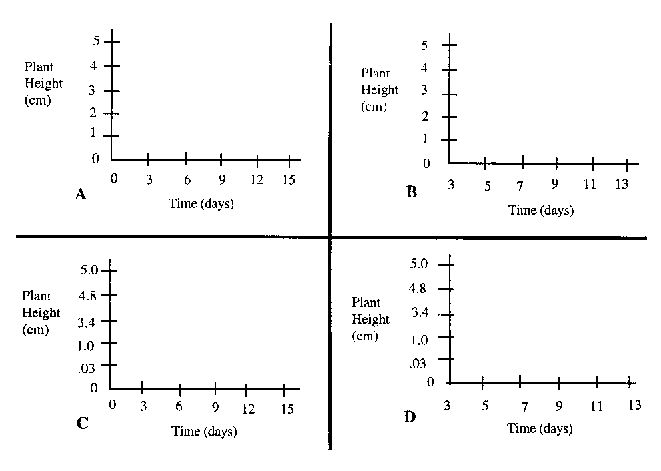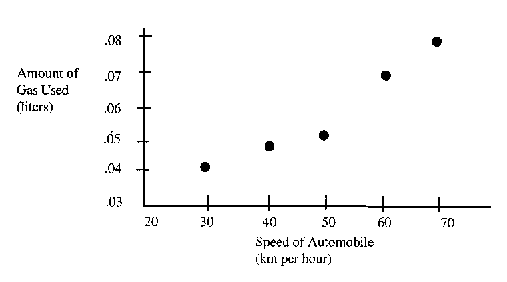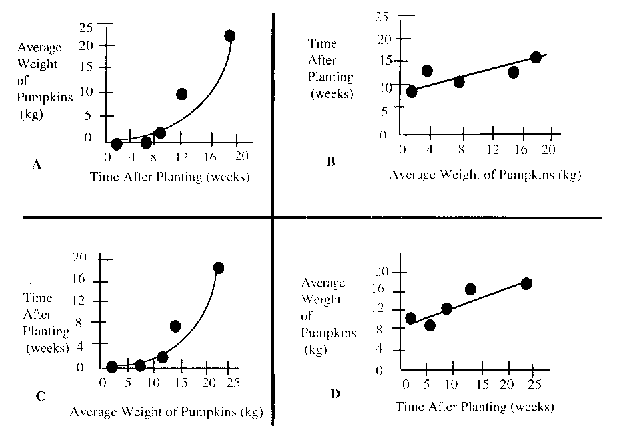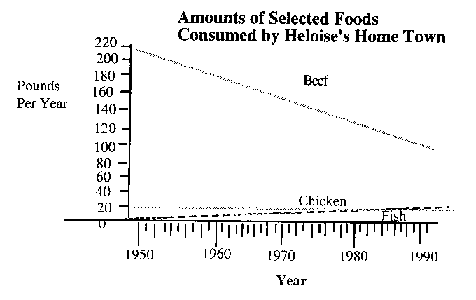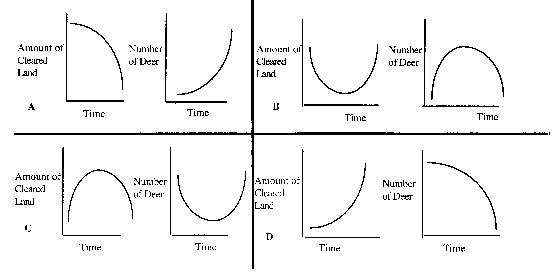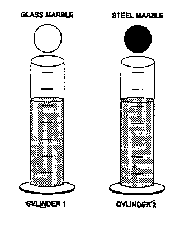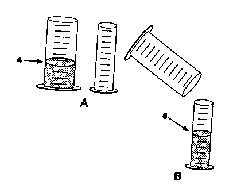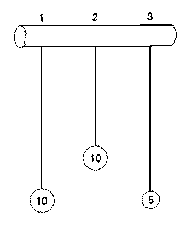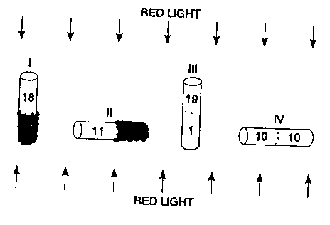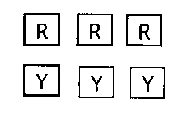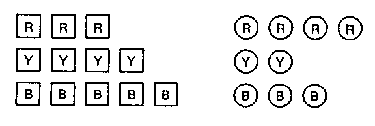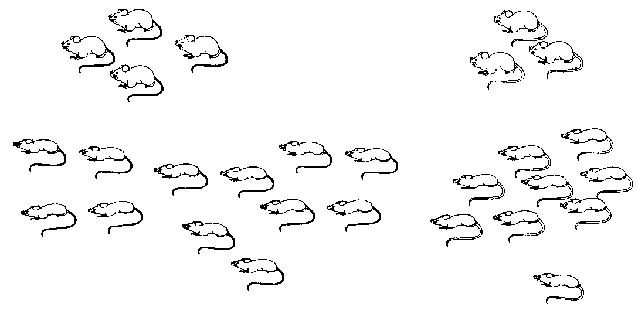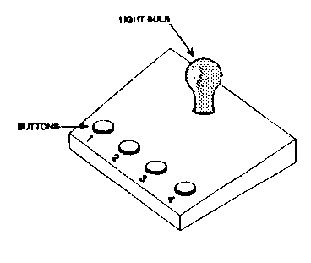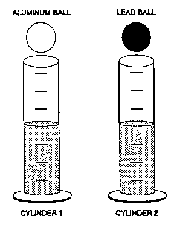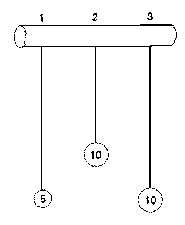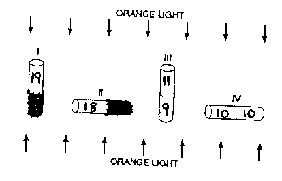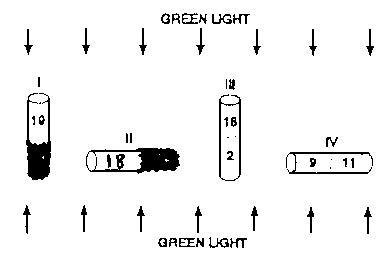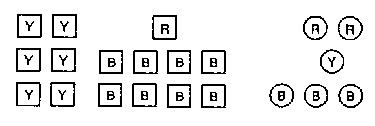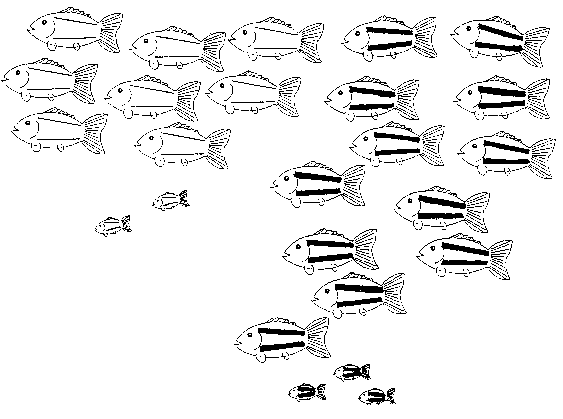 |
 |
|
| : Instruments : Curriculum Development | ||
|
||||||||||||||||||||||||||||||||||||||||||||||||||||||||||||||||||||||||||||||||||||||||||||||||||||||||||||||||||||||||||||||||||||||||||||||||||||||||||||||||||||||||||||||||||||||||||||||||||||||||||||||||||||||||||||||||||||||||||||||||||||||||||||||||||||||||||||||||||||||||||||||||||||||||||||||||||||||||||
CLASSROOM TEST OF SCIENTIFIC REASONING
|
||||||||||||||||||||||||||||||||||||||||||||||||||||||||||||||||||||||||||||||||||||||||||||||||||||||||||||||||||||||||||||||||||||||||||||||||||||||||||||||||||||||||||||||||||||||||||||||||||||||||||||||||||||||||||||||||||||||||||||||||||||||||||||||||||||||||||||||||||||||||||||||||||||||||||||||||||||||||||
| ____ | ____ | ____ | ____ | ____ | ____ |
| ____ | ____ | ____ | ____ | ____ | ____ |
| ____ | ____ | ____ | ____ | ____ | ____ |
| ____ | ____ | ____ | ____ | ____ | ____ |
BIOLOGICAL MOLECULES BACKGROUND
Name ______________________________________________________
The next three questions are related.
- A biochemist was analyzing several unknown molecules found
in a living organisms. She was interested in determining
to which of the major groups of biological molecules they
belonged. The biochemist determined that one of the molecules
has nearly twice as many calories per gram (approx. 9 kcal/g)
as any of the other molecules. To which the following the
groups does the molecules most likely below?
- carbohydrates
- proteins
- lipids
- The biochemist determined that the next molecule contained
only carbon, hydrogen, and oxygen, and it did not mix with
water. To which of the following groups does this molecule
most likely belong?
- carbohydrates
- proteins
- lipids
- The biochemist determined that the next molecule contained
many different subunits in a long chain and that all
of the subunits of this molecule contained nitrogen. To
which of the following groups does this molecule most likely
belong?
- carbohydrates
- proteins
- lipids
All of these are Gligs.

None of these is a Glig.

Which of these are Gligs?

All of these are Spings.

None of these is a Sping.

Which of these are Spings?

Genetics Background
Write your name and the date in the lower right corner of the answer sheet as indicated. Put an "A" in the space where it says "Subject". Then write in and bubble in your social security number where it says "STUDENT ID". (There are ten columns of bubbles, but your social security number has only nine digits. Leave the last column blank.) Indicate your answers to the following question on the left side of the answer sheet. Fill in the appropriate bubble completely. Erase any mistake thoroughly.
- A student placed a white female guinea pig in a cage with
three male guinea pigs (one white and two black). Later
the female gave birth to a white offspring. Which of the
following is the best choice concerning the father of the
offspring? (Note: Black is dominant.)
- The white male must be the father.
- One of the black males must be the father.
- The white male could be the father.
- Either of the black males could be the father.
- Choices c and d together are the best choice.
- If the student in question 1 above assumed both black
males were homozygous, which of the following would be the
best choice concerning the father of the white offspring?
- The white male must be the father.
- One of the black males must be the father.
- The white male could be the father.
- Either of the black males could be the father.
- Choices c and d together are the best choice.
- Hemophilia is the "bleeder's" disease - people who have
it have blood which does not clot well and they often die
early. The gene for the disease is recessive and sex-linked.
Which of the following would be the best prediction about
the offspring of a hemophiliac male and a completely normal
(non-hemophiliac) female?
- All children would have hemophilia.
- All females would have hemophilia.
- All males would have hemophilia.
- The ratio of children with hemophilia to normal children would be 3:1.
- None of the children would have hemophilia.
- Assume that you crossed two flowers (parents), a red one
and a white one, and all of the offspring (F1) were pink.
Which of the following is the best prediction about the
offspring (F1) and the F2 offspring that would be produced
by crossing two of these F1 flowers?
- The F1 offspring are all heterozygous, and the ratio of their offspring (F2) would be 1:2:1, red:pink:white.
- The F1 offspring are all heterozygous, and the ratio of their (F2) offspring would be 3:1, pink to white.
- The parents must be heterozygous, or no difference would have shown up in the F1.
- An obvious error has been made, because such a cross of two homozygotes would not produce the results above.
- The red parent is dominant, the white parent is recessive; the hybrid is pink because the red was diluted. The F2 will be all types, not of a particular ratio.
- Suppose that the ability to curl your little toe is governed
by a single pair of genes. A man and a woman who are both
little toe curlers have one child who is a little toe curler
and then have a second child who is a non-curler. The most
probable explanation for these observations is that:
- Both parents are heterozygous.
- One parent is heterozygous; the other parent is homozygous recessive.
- One parent is heterozygous; the other parent is homozygous dominant.
- Non-curler is dominant to curler; therefore the second child was a non-curler even though he also had a gene for little toe curler.
- A mutation occurred in one of the parents during meiosis; the mutated gene was transmitted to the child who is a non-curler.
INSTRUMENTS TO USE FOR SPRING 1997 - (Word Perfect)
Answers are * (remove * for test and letters for questions
2 thru 7)
EXAM ONE
Experimental Design Questions
- Suppose two species of lizards, Fence lizards and Whiptail
lizards eat insects as their main food. However, Fence lizards
find their insects up in the bushes, while Whiptail lizards
find their insects on the ground. Living alone in a field,
each lizard did well, but when they lived in the same field,
Fence lizards died out. Lyman suggested that the reason
is that Whiptail lizards are better competitors for insects.
They are more aggressive and chase Fence lizards away from
the insects. Which of the following observations would add
the most strength to Lyman's conclusion that Whiptail lizards
are better competitors?
- Fence lizards do NOT survive in a field where Whiptail lizards have lived.
- Fence lizards do survive in a field where Whiptail lizards live, if Whiptail lizards are given a drug that lowers their aggressiveness.*
- Both species survive in a field where the insects on the bushes are knocked to the ground.
- Whiptail lizards die out when all the insects on the bushes are knocked to the ground.
- Both c and d above.
The next six questions refer to the following information.
While walking around a lake, you find two dead fish lying about 10 feet apart on the shore. One of the fish is a bluegill and the other is a bass. The bluegill is lying within one foot of the lake water on moist mud. The bass is resting on a dry, sandy area six feet from the water. Upon returning to the area two weeks later, you find the bluegill is almost completely decomposed, whereas the bass is just beginning to decompose.
- Use this key to identify the following six statements
as to whether they are:
- an hypothesis
- a prediction
- data
- a question
- a conclusion
- Several fly maggots can be seen crawling in and on both
fish. C
- Tougher tissue in the bass may cause the difference in
decomposition rates. A
- The amount of water available may cause the difference
in decomposition rates. A
- If the dead bluegill and bass are both placed within one
foot of the water, they will decompose at a similar rate.
B
- Because the fish were different types, they were lying
on different types of soil, and they were exposed to different
amounts of water, we can't say for sure why they are decomposing
at different rates. E
- Why is the bluegill decomposing faster than the bass? D
The next three questions are related.
- One day you meet Astrid watching an ant attach a beetle
on an acacia plant. When asked what she is doing, Astrid
replies, "I'm watching an ant protect an acacia plant from
beetles eating it."
Which of the following is the best description of Astrid's reply?- She is NOT a careful observer.
- She is stating a conclusion only partly derived from her observation.*
- She is stating a conclusion entirely drawn from her observation.
- She is stating her observation.
- She is making no assumption.
- Which of the following observations would add the most
strength to Astrid's reply (in the question above)?
- observing the ant attacking more beetles
- observing another ant attack a beetle
- observing that the ant is successful at killing the beetle
- the absence of beetles on acacia plants with ants on their branches*
- observing more beetles land on the acacia plant as time passes
- Astrid then removes the ants from the acacia plant and
keeps all ants off the acacia plant for a period of four
months. Many of its leaves are eaten. Astrid states that
this evidence supports the reply that she is watching an
ant protect an acacia plant from beetles eating it. Which
of the following assumptions is she making?
- The acacia didn't get enough water in the four months of observation.
- Ants cannot live without acacia plants to feed upon.
- Beetles and ants cannot successfully exist in the same habitat (area) for a long period of time.
- The beetles ate the acacia leaves.*
- All acacia plants need ants in order to survive.
BIO MOLECULES POSTTEST (put on EXAM 2)
The next six questions are related.
- A biochemist was analyzing several unknown biological
molecules. She was interested in determining to which of
the major groups of biological molecules they belonged.
The chemist determined that one of the molecules has nearly
twice as many calories per gram (approx. 9 kcal/g) as any
of the other molecules. To which of the following groups
does the molecule most likely belong?
- carbohydrates (polysaccharides)
- proteins
- lipids*
- Atomic analysis revealed that there were carbon, hydrogen,
and oxygen atoms in a ratio of 1: 2: 1 in the second molecule.
To which of the following groups does this molecule most
likely belong?
- carbohydrates (polysaccharides)
- proteins
- lipids*
- The biochemist determined that the next molecule contained
only carbon, hydrogen, and oxygen, and it did not mix with
water. To which of the following groups does this molecule
most likely belong?
- carbohydrates (polysaccharides)
- proteins
- lipids*
- The chemist determined that the next molecule contained
many different subunits in a long chain and that all
of the subunits of this molecule contained nitrogen. To
which of the following groups does this molecule most likely
belong?
- carbohydrates (polysaccharides)
- proteins
- lipids*
- The biochemist determined that one of the molecules changed
from being a liquid at room temperature to being a solid
at room temperature as she performed a process called hydrogenation
in which extra hydrogens were forced into the molecule.
To which of the following groups does the molecule most
likely belong?
- carbohydrates (polysaccharides)
- proteins
- lipids*
- The biochemist determined that one of the molecules had
a very complex shape involving 4 sub-molecules that were
themselves globular structures. To which of the following
groups does this molecules most likely belong?
- carbohydrates (polysaccharides)
- proteins
- lipids*
(ADD MIFLS AND PARRIFS PICTURES TO EXAM TWO, FORM A; ADD PLIPS AND TWRILLS TO FORM B. BE SURE A LINE IS INCLUDED FOR THE STUDENT'S NAME AT THE TOP OF THE PAGE.)
NAME ________________________________________________________
Mifls
All of these are Mifls.

None of these is a Mifl.

Which of these are Mifls?

NAME ________________________________________________________
Parrifs
All of these are Parrifs.

None of these is a Parrif.
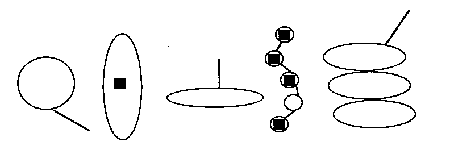
Which of these are Parrifs?
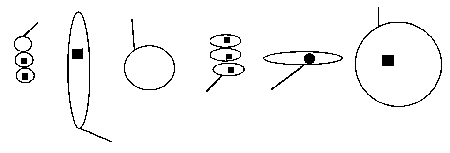
NAME ________________________________________________________
Plips
All of these are Plips.
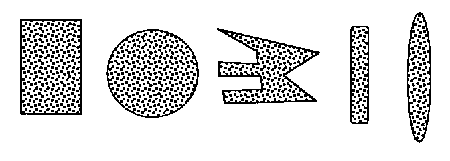
None of these is a Plip.
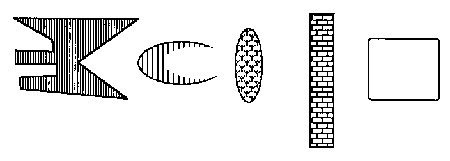
Which of these are Plips?

EXAM TWO
EXPERIMENTAL DESIGN QUESTIONS
Answers are* (remove * for test and letters for
questions 2 thru 7)
- A prominent biology textbook described a study of two
species of duckweed, Lymna polyrhiza (LP) and Lymna
gibba (LG), a very small plant that floats in or on
water. "Grown alone in a tank, each did well but when they
were grown in the same tank, LP died out. The reason
is that although both LG and LP require the
same amount of light, LG is a better competitor for
it. LG has air-filled sacs that cause it to float
higher in the water, blocking light from its competitor."
Which of the following observations would add the most strength
to the conclusion that LG is the better competitor?
- LP does NOT survive in a tank of water from which LG has been removed.
- LP does survive in water from a tank where LG is growing, if it is filtered first.
- Both species survive in a tank illuminated from the bottom only.
- LG dies out when both species are placed in a tank illuminated from the bottom only.*
- Both a and b.
The next six questions refer to the following information.
While walking in a nearby park, you notice petunias growing. Some petunias are in a sunny spot located 8 feet from the water sprinkler. Other petunias are under a pine tree that is located 22 feet from the water sprinkler. You notice that the petunias in the sun are significantly taller plants and have larger flowers.
- Use this key to identify the following six statements
are to whether they are:
- an hypothesis
- a prediction
- data
- a question
- a conclusion
- The petunias in the sun receive sunlight for an average
of 8 hours a day, while the petunias under the pine tree
receive sunlight for 3 hours a day. C
- Why are the petunias in the sunny spot larger than those
under the pine tree? D
- The petunias under the pine tree may have more people
walk across them because they are closer to a sidewalk.
A
- The difference in plant size may be related to differences
in available water. A
- If the pine tree is removed from the park, the petunias
will be the same height. B
- Because the petunias were receiving different amounts of sunlight, they were subjected to different numbers of people walking on them, and they were exposed to different amounts of water, we can't say for sure why they are different sizes. E
The next three questions are related.
One day you meet a student watching a gazelle run away from
a cheetah. As the gazelle is running away, it slows up a bit
to "stott". "Stotting" means the gazelle jumps up about a
half meter off the ground with all four legs held stiff and
straight and with its white rump fully exposed. (see picture)
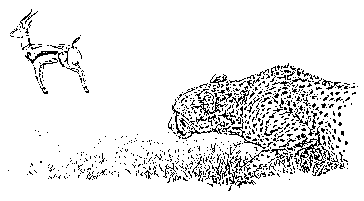
- When asked what he is doing, the student replies, "I'm
watching a gazelle escaping a cheetah while letting the
cheetah know he's been detected and lost the element of
surprise." Which of the following is the best description
of his reply?
- He is NOT a careful observer.
- He is stating a conclusion only partly derived from his observation.
- He is stating a conclusion entirely drawn from his observation.
- He is stating his observation.
- He is making no assumption.
- Which of the following observations would add the most
strength to the student's reply in the question above?
- observing another gazelle stot when a cheetah is stalking it
- observing that gazelles only stot when they are in a group of gazelles
- observing that gazelles only stot when their young are nearby
- observing the gazelles rapidly moving its eyes from side to side to look for other cheetahs in the vicinity as it stots away
- observing cheetahs frequently abandon the hunt when they see a gazelle stot
- The student observes lots more gazelles stotting when
cheetahs are approaching. He notices that the white rump
is always exposed toward the cheetahs. The student states
that this evidence supports his reply in the first question
of this section. Which of the following assumptions is he
making?
- The purpose of stotting is to communicate with other gazelles.
- The white rump communicates a message to the cheetah.
- Cheetahs seldom are successful at capturing gazelles.
- Gazelles usually graze as a group, rather than individually.
- Gazelles are aware that cheetahs often hunt as a group, rather than as individuals.
EXAM THREE
NATURAL SELECTION POSTTEST
Answers are * (remove * for test)
-
Hummingbirds have very long beaks to reach the nectar at the
base of long tubular flowers to get their food. Suppose their
ancestors had much shorter beaks. Biologists would suggest
that the ability to produce longer beaks evolved in hummingbirds
because:
- individual hummingbirds developed longer beaks as a result of repeated extension of their beaks to reach the nectar in long tubular flowers.
- hummingbirds needed long beaks in order to feed from long tubular flowers
- a few hummingbirds probably had long beaks before there were lots of long tubular flowers around*
- hummingbirds learned to adapt to their environment.
- Wolves that live in Alaska today have a thick fat layer.
Biologists believe that their ancestors did not have fat
as thick as it is today. The reason the amount of fat increased
over the centuries was that:
- the wolves' need to have more fat caused them to deposit more fat and have offspring with more fat.
- a few wolves that naturally had more fat had a better chance to survive and reproduce*
- individual wolves increase their amount of fat whenever they are exposed to harsh winters.
- While wolves were evolving a thicker fat layer:
- most wolves in each successive generation had about the same amount of fat as their parents.*
- most wolves in each successive generation had slightly more fat than their parents.
- The population of wolves was able to evolve a thicker
layer of fat because:
- the wolves with a thicker layer of fat were better adapted.
- wolves with a thick fat layer were absolutely certain to survive and produce offspring
- wolves with thicker fat layers were better able to capture prey
- the wolf population included individuals with very thin, thin, medium, thick and very thick layers of fat.*
- If the climate changed dramatically, producing another
Ice Age and the weather in Alaska became significantly colder
than at anytime in the last 10,000 years, then
- many wolves would die because their bodies are not sufficiently adapted to this environment.*
- Most individual wolves would quickly begin to produce more fat.
FINAL EXAM
GENETICS POSTTEST
- Assume that you crossed two cattle (parents), a red one
and a white one, and all of the F1 calves were roan in color.
Which of the following is the best prediction about the
F1 calves and the F2 offspring that would be produced by
crossing two of these F1 calves?
- The F1 calves are all heterozygous, and the ratio of their offspring would be 1: 2: 1, red: roan: white.*
- The F1 calves are all heterozygous, and the ratio of their offspring would be 3: 1, roan to white.
- The parents must be heterozygous, or no difference would have shown up in the F1.
- An obvious error has been made, because a cross of two homozygotes would not produce the results above.
- The red parent is dominant, the white parent is recessive; the F1 calves are roan because the red was diluted. The F2 would be all types, not of a particular ratio.
- Red-green color blindness make it difficult for individuals
to tell the difference between red and green colors. The
gene for this condition is recessive and sex-linked. Which
of the following would be the best prediction about the
offspring of a red-green colorblind male and a homozygous
normal (non-red-green colorblind) female?
- All children would be red-green colorblind.
- All females would be red-green colorblind.
- All males would be red-green colorblind.
- The ratio of colorblind to normal children will be 3:1.
- None of the children would be red-green colorblind.*
- Assume that the ability to wiggle your ears is governed
by a single pair of genes. A man and a woman who both are
ear wigglers have one child who is an ear wiggler and then
have a second child who cannot wiggle his ears. The most
likely explanation for these observations is that:
- Both parents are heterozygous.*
- One parent is heterozygous; the other parent is homozygous recessive.
- One parent is heterozygous; the other parent is homozygous dominant.
- Non-ear wiggling is dominant to ear wiggling; therefore the second child was a non-ear wiggler even though he also had a gene for ear wiggling.
- A mutation occurred in one of the parents during meiosis; the mutated gene was transmitted to the child who is a non-ear wiggler.
- A student placed a brown female duck in a cage with three
male ducks (one brown and two rust). Later the female gave
birth to a brown offspring. Which of the following is the
best choice concerning the father of the offspring? (Assume
that rust is dominant.)
- The brown male must be the father.
- One of the rust males must be the father.
- The brown male could be the father.
- Either of the rust males could be the father.
- Choices c and d together are the best choice.*
- If the student in the question above assumed that both
rust males were homozygous, which of the following would
be the best choice concerning the father of the brown offspring?
- The brown male must be the father.*
- One of the rust males must be the father.
- The brown male could be the father.
- Either of the rust males could be the father.
- Choices c and d together are the best choice.
Biology Background
POSTTEST - revised December, 1995
On the bubble sheet provided, fill in your NAME and the DATE in the lower right hand corner. Put an "A" in the space where it says "Subject". Then write in and bubble in your SOCIAL SECURITY NUMBER where it says "STUDENT ID". (There are ten columns of bubbles, but your social security number has only nine digits. Leave the last column blank.) For each question, mark the letter on the bubble sheet provided that best describes your thoughts. Use the following key:
| A = strongly disagree | B = disagree | C = uncertain | D = agree | E = strongly agree |
| Strongly Disagree |
Disagree | Uncertain | Agree | Strongly Agree |
|
|
A | B | C | D | E |
|
A | B | C | D | E |
|
A | B | C | D | E |
|
A | B | C | D | E |
|
A | B | C | D | E |
|
A | B | C | D | E |
|
A | B | C | D | E |
|
A | B | C | D | E |
|
A | B | C | D | E |
|
A | B | C | D | E |
|
A | B | C | D | E |
|
A | B | C | D | E |
|
A | B | C | D | E |
|
A | B | C | D | E |
|
A | B | C | D | E |
|
A | B | C | D | E |
- Tom wanted to know how much fertilizer he should give his tomato plants. He gave different amounts of fertilizer to his plants. He then counted the number of tomatoes on each plant. His results are in the data table below.
| Amount of Fertilizer (grams) |
Number of Tomatoes Produced |
|---|---|
| 0 | 3 |
| 100 | 4 |
| 150 | 6 |
| 250 | 8 |
| 450 | 10 |
Which set of axes below is the BEST to use for graphing
his results?
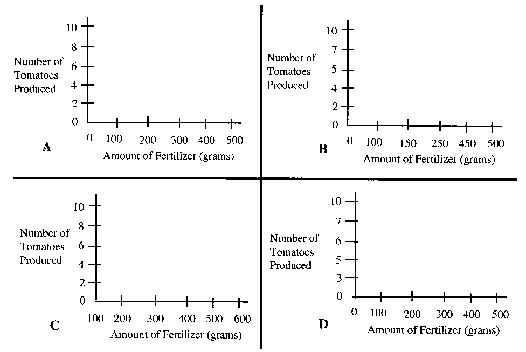
Use the information below to answer the next 3 questions.
Rose owns a flower shop. She gave different amounts of water
to several plants each day. She measured the height of the
plants after three weeks. The graph below shows the results.
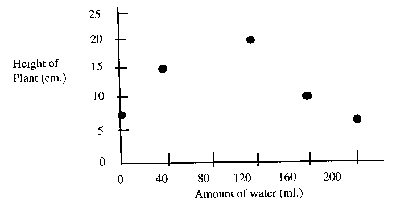
- How much water was given each day to the plant that grew
10 cm. tall?
a. 120 ml. b. 140 ml. c. 160 ml. d. 180 ml. - The following statements describe the relationship between
the amount of water given and the height of the plant. Which
is the best description?
- As the amount of water increased to 120 ml., the height
of the plants decreased. With amounts greater than 120
ml., the height of the plants increased.
- Both the amount of water and the height of the plants
increased up to 120 ml. Then they both decreased.
- As the amount of water increased to 120 ml, the plant
growth quickly increased. After 120 ml. of water the
plant growth increased more slowly.
- As the amount of water increased to 120 ml., the height of the plants increased. With amounts greater than 120 ml., the height of the plants decreased.
- As the amount of water increased to 120 ml., the height
of the plants decreased. With amounts greater than 120
ml., the height of the plants increased.
- How tall would you expect plants to grow if given 140
ml. of water each day?
- 8 cm.
- 10 cm.
- 15 cm.
- 20 cm.
- more than 20 cm.
- Liz jogs 2 miles everyday. One day after running, she
measures her pulse every two minutes. These are the results.
Her pulse rate was 140 beats per minute 2 minutes after
running. It was 115 beats per minute after 4 minutes. It
was 105 beats per minute after 6 minutes. It was 90 beats
per minute after 8 minutes. It was 75 beats per minute after
10 minutes.
Which of these graphs best shows her results?
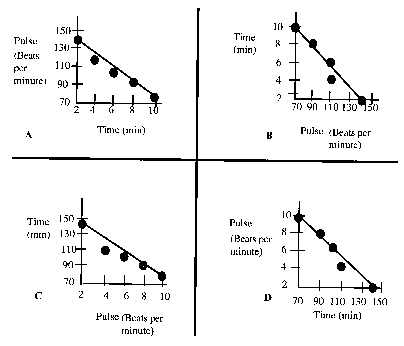
- Helga wanted to know the death rate for women for three
diseases. She found the graph shown below. Which of these
statements is supported by the graph?
- From 1971 to 1991, the number of deaths in women due to breast cancer and lung cancer increased at about the same rate.
- Death rates in women for heart disease are increasing.
- In 1991, the death rate for heart disease in women was approximately five times that of lung cancer.
- From 19971 to 1991, death rates for women due to lung cancer, heart disease, and breast cancer all increased.
- As death rates for heart disease decreased in women, death rates for lung cancer also decreased.
- Aaron studied fruit flies for one month. He measured the
amount of waste produced by the fruit flies. He concluded
that as the number of flies increased, the amount of waste
increases. Which pair of graphs best support his
conclusion?
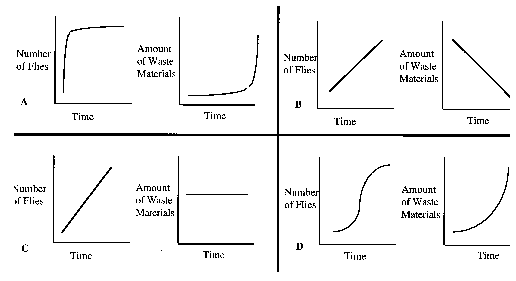
- A best fit line describes the trend in a set of data points.
Which of these graphs shows the most appropriate best fit
line?
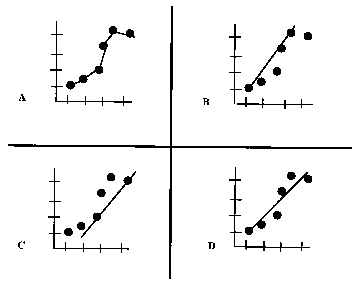
- A prominent biology textbook described a study of two
species of duckweed, Lymna polyrhiza (LP) and Lymna
gibba (LG), a very small plant that floats in or on
water. "Grown by itself in a tank, each did well but when
both species were grown in the same tank, L.P died
out. The reason is because L.G is a better competitor
because it produces a chemical that is toxic to LP."
Which of the following observations would add the most strength
to the idea that LG is the better competitor?
- Neither species survives when there is no illumination.
- L.P does survive in water from a tank where LG is growing, if illumination comes from both the top and bottom.
- Both species survive in a tank with filtered water.
- L.G dies out when both species are placed in a tank with filtered water.
- Both a and b.
The next six questions refer to the following information:
While walking in the desert, you notice two kinds of rabbits. One of the rabbits is light brown and has large, muscular legs, and the other is black and has much smaller legs. You see the brown rabbit foraging above ground while the black rabbit is seen emerging from an underground burrow chewing on a plant. The black rabbit returns to the underground burrow to sleep at night, while the brown rabbit stays above ground to sleep.
- Use this key to identify the following six statements
as to whether they are a/an:
- hypothesis
- prediction
- data
- question
- conclusion
- If both brown and black rabbits are raised in a pen where
there are no coyotes, both rabbits will live above ground.
- The ability to outrun predators may determine where rabbits
live.
- Because the rabbits have different colors of fur, different
leg sizes, and eat different foods, we can't say for sure
why they have different homes.
- Why does the black rabbit burrow while the brown rabbit
stays above ground?
- Six coyotes were seen near the rabbits' home.
- Differences in dietary requirements may cause the rabbits
to live in different places.
The next three questions are related.
- One day you meet Phil watching a wasp drag a paralyzed
grasshopper down a small hole in the ground. When asked
what he is doing, Phil replies, "I'm watching that wasp
store paralyzed grasshoppers in her nest to feed her offspring."
Which of the following is the best description of Phil's
reply?
- He is NOT a careful observer.
- He is stating a conclusion only partly derived from his observation.
- He is stating a conclusion entirely drawn from his observation.
- He is stating his observation.
- He is making no assumption.
- Which of the following observations would add the most
strength to Phil's reply in the question above?
- observing the wasp digging a similar hole
- observing the wasp dragging more grasshoppers in to the hole
- observing the wasp sealing the entrance to the hole and concealing its location
- digging into the hole and observing wasp eggs on the paralyzed grasshoppers
- observing adult wasps emerging from the hole a month later
- Both you and Phil wait until the wasp leaves the area,
then you dig into the hole and observe three paralyzed grasshoppers,
each with a white egg on its side. Phil states that this
evidence supports his reply that the wasp is storing paralyzed
grasshoppers in her nest to feed her offspring. Which of
the following assumptions is Phil making?
- The eggs are grasshopper eggs.
- The wasp laid the eggs.
- The wasp dug the hole
- The wasp will return with another grasshopper
- The wasp has left permanently.

